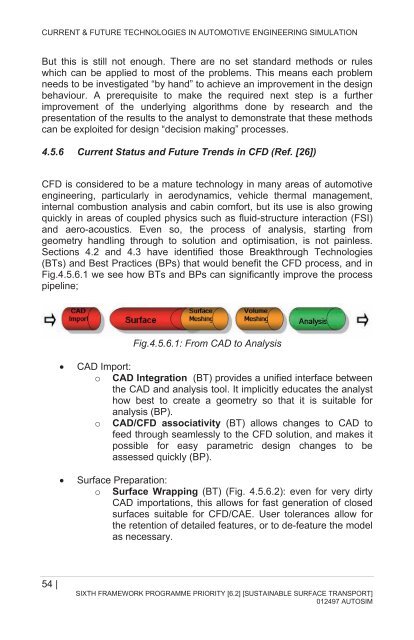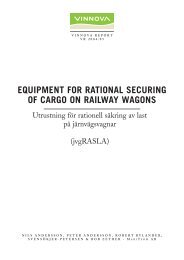Download - Autosim Autosim
Download - Autosim Autosim
Download - Autosim Autosim
Create successful ePaper yourself
Turn your PDF publications into a flip-book with our unique Google optimized e-Paper software.
CURRENT & FUTURE TECHNOLOGIES IN AUTOMOTIVE ENGINEERING SIMULATION<br />
But this is still not enough. There are no set standard methods or rules<br />
which can be applied to most of the problems. This means each problem<br />
needs to be investigated “by hand” to achieve an improvement in the design<br />
behaviour. A prerequisite to make the required next step is a further<br />
improvement of the underlying algorithms done by research and the<br />
presentation of the results to the analyst to demonstrate that these methods<br />
can be exploited for design “decision making” processes.<br />
4.5.6 Current Status and Future Trends in CFD (Ref. [26])<br />
CFD is considered to be a mature technology in many areas of automotive<br />
engineering, particularly in aerodynamics, vehicle thermal management,<br />
internal combustion analysis and cabin comfort, but its use is also growing<br />
quickly in areas of coupled physics such as fluid-structure interaction (FSI)<br />
and aero-acoustics. Even so, the process of analysis, starting from<br />
geometry handling through to solution and optimisation, is not painless.<br />
Sections 4.2 and 4.3 have identified those Breakthrough Technologies<br />
(BTs) and Best Practices (BPs) that would benefit the CFD process, and in<br />
Fig.4.5.6.1 we see how BTs and BPs can significantly improve the process<br />
pipeline;<br />
Fig.4.5.6.1: From CAD to Analysis<br />
• CAD Import:<br />
o CAD Integration (BT) provides a unified interface between<br />
the CAD and analysis tool. It implicitly educates the analyst<br />
how best to create a geometry so that it is suitable for<br />
analysis (BP).<br />
o CAD/CFD associativity (BT) allows changes to CAD to<br />
feed through seamlessly to the CFD solution, and makes it<br />
possible for easy parametric design changes to be<br />
assessed quickly (BP).<br />
• Surface Preparation:<br />
o Surface Wrapping (BT) (Fig. 4.5.6.2): even for very dirty<br />
CAD importations, this allows for fast generation of closed<br />
surfaces suitable for CFD/CAE. User tolerances allow for<br />
the retention of detailed features, or to de-feature the model<br />
as necessary.<br />
54 |<br />
SIXTH FRAMEWORK PROGRAMME PRIORITY [6.2] [SUSTAINABLE SURFACE TRANSPORT]<br />
012497 AUTOSIM
















